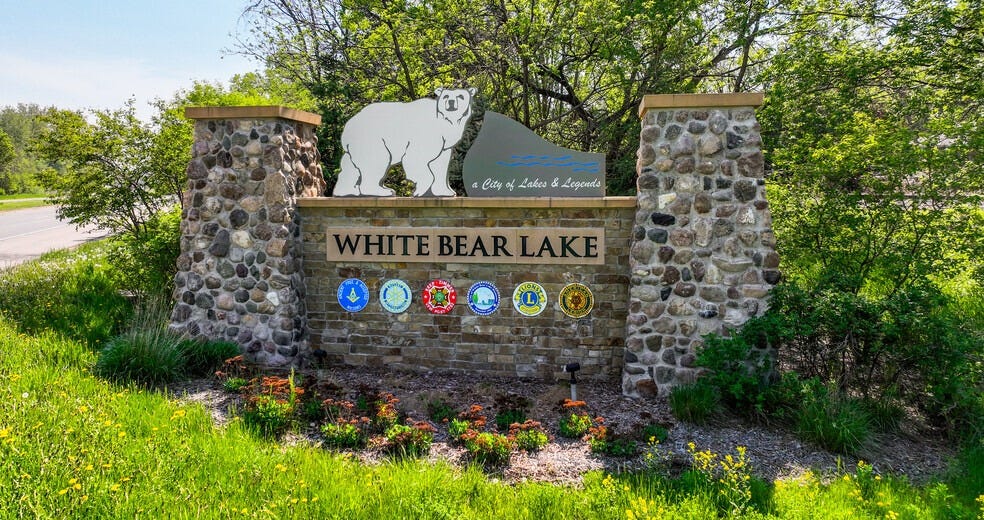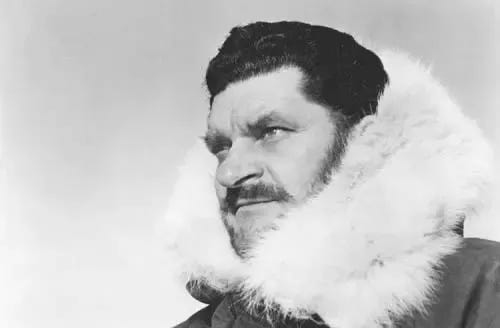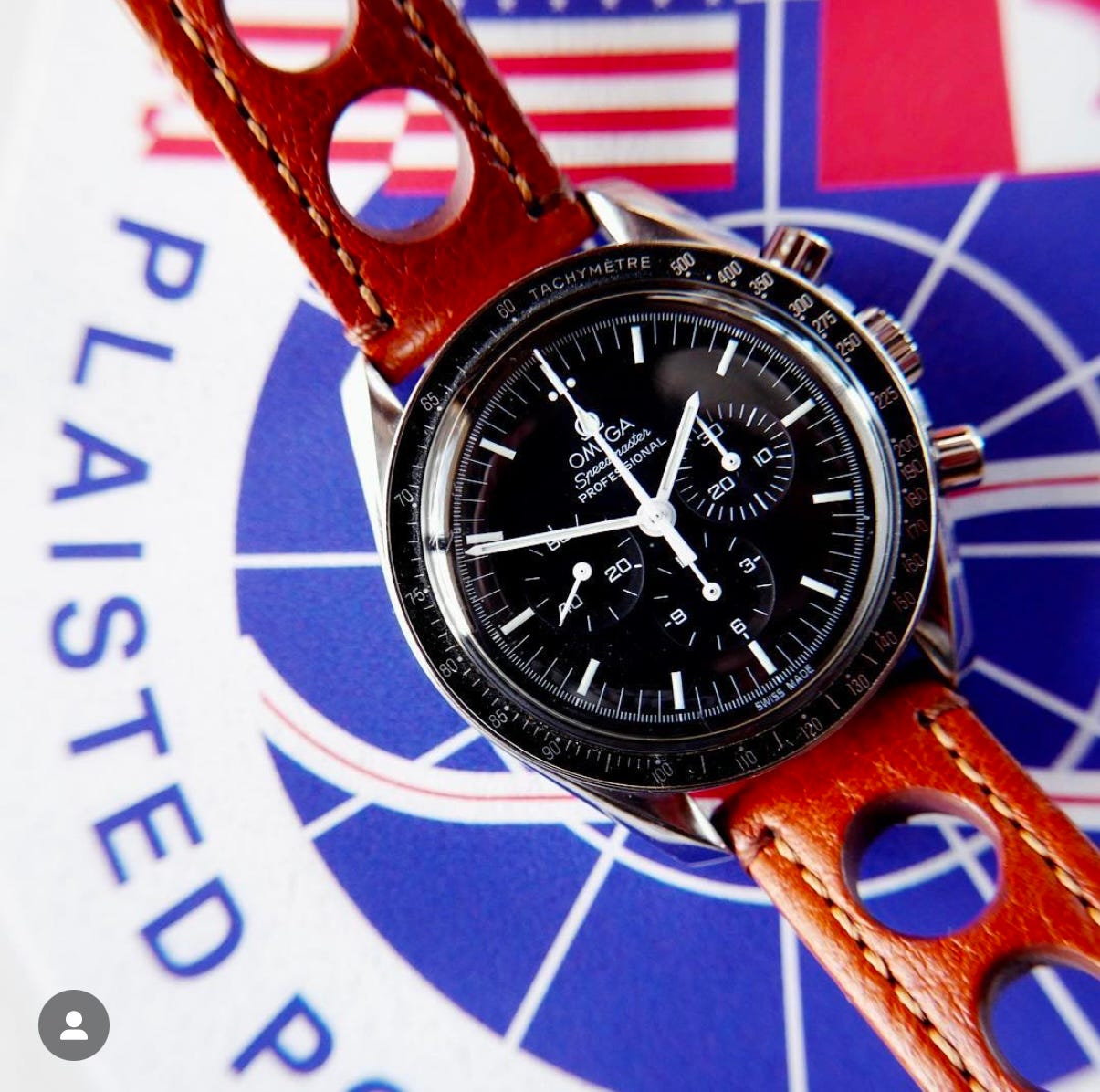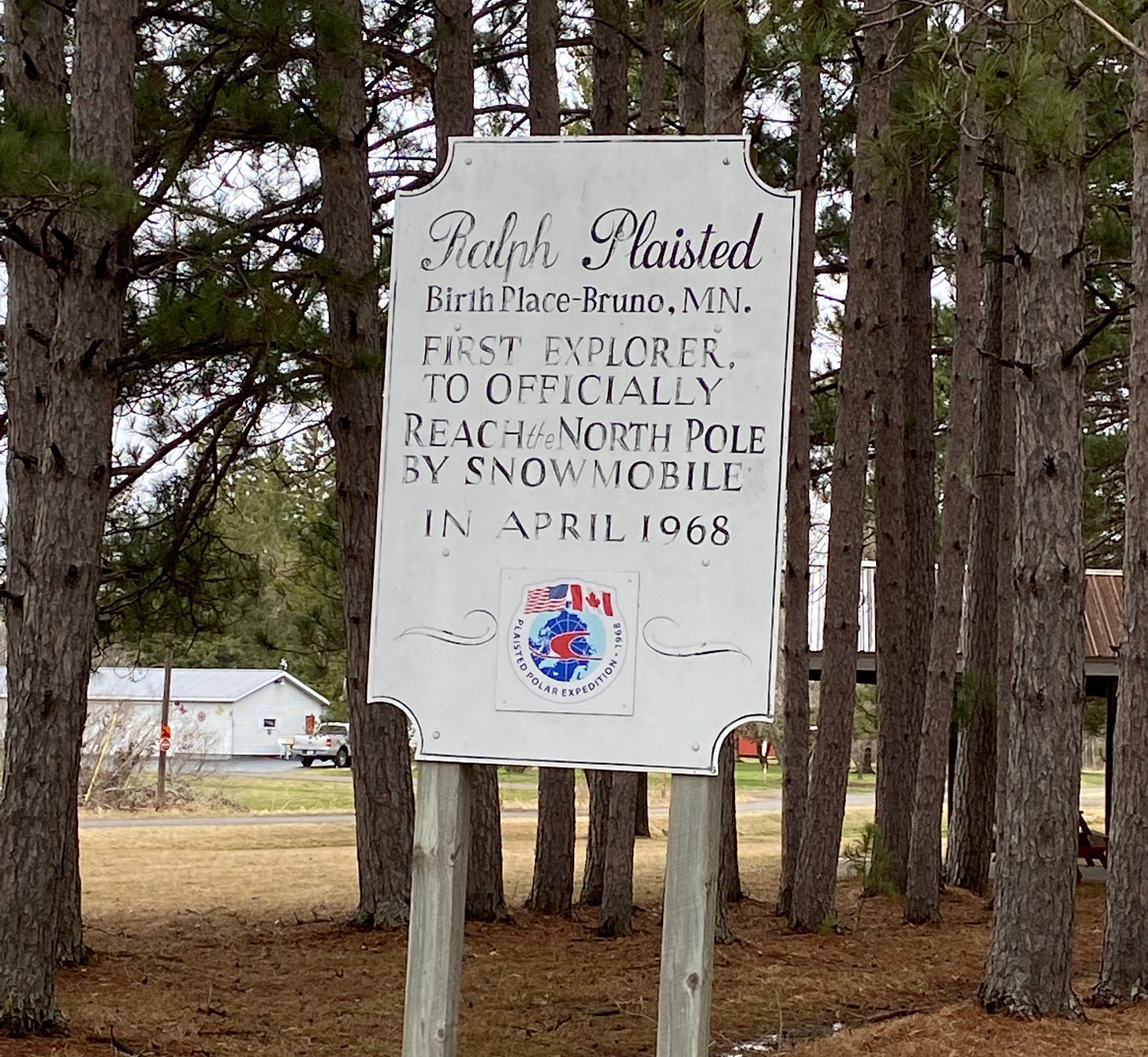Off the Map—the Nearly-Forgotten Story of a Polar Pioneer
Reminders of one of history's most unlikely explorers slowly disappearing from the city of lakes and legends
A broken driveway and concrete pad defy the earth of this empty lot as the land slowly surrenders to nature. A deteriorating 2-story house stood here just a couple years ago, vacant and overgrown with brush obscuring its pale blue facade from view. Through the gaps in the foliage the structure suggested a once-cherished family home sometime before its eventual decline, sporting three decorative mid century white diamonds on the two-stall garage door. A stout chimney ran up the center between the attached garage and home, flower boxes were affixed to the first story picture windows, and a small octagonal window on the second floor added a bit more mid-century-modest or retro pizzazz.
The property had been in a state of disrepair since my wife and I’s arrival to the neighborhood, likely much longer by the looks of it. I drove by it often without much more than a passing curiosity. Abandoned houses are unusual in this part of town between the established family homes and those small mansions along the shores of the nearby Bald Eagle Lake. Properties along this stretch of road tend to reflect the area’s roots as a cottage getaway town, many still with gravel driveways and the road free of curbs or sidewalks. One day, seemingly without so much as a dumpster in the driveway or heavy equipment amassing to warn of the impending job, the unremarkable house was gone.
City Of Lakes and Legends
The people of White Bear Lake, Minnesota are proud of their local heroes and this place they call home—the signs greet you as you enter the city limits with a slogan above the name that boldly states: CITY OF LAKES AND LEGENDS. Residents here heavily embrace its name. The small city is saturated with polar bear motifs in the form of garden statues, flags, even a giant white bear effigy holding up a Chevy sign at one of the car dealerships. And not unlike certain unsavory characters in the Coen Brothers film Fargo in a scene filmed at a former establishment just on the other side of the lake, you’re likely to hear an occasional “go Bears” while out around town.
A local legend all its own, the name was born of a Romeo and Juliet-like story of forbidden young love between members of two warring tribes. While the details vary, to win the hand of his desire and secure peace between their people the young man was challenged to show an act of extreme courage by the young woman’s father. Upon returning to his love on Manitou Island to share this encouraging development, he found her besieged by a great white bear. He immediately flung himself into the fight, delivering his love from danger. But in the bitter struggle both the great bear and young man fell lifeless and defeated, their spirits still said to roam on the island today.
In more modern times, White Bear Lake has seen its share of intriguing residents and figures. The likes of Ma Barker and the Karpis Gang briefly called this place home while other notorious mobsters such as John Dillinger—perhaps even Al Capone—were spotted at the former dance hall on the southwest shores of White Bear Lake. F. Scott Fitzgerald and his wife Zelda were residents for a short time at the White Bear Yacht Club, Fitzgerald writing a short story titled Winter Dreams with the plot set at a thinly-veiled town called “Black Bear Lake” and incorporated much of the nearby geography throughout. The short story would later serve as the foundation for his famous novel The Great Gatsby.
Then there are the notable explorers, of which there are surprisingly many for a small city of just under 25,000 souls. Josh A. Cassada, a NASA Astronaut once called this place home. The first E Scow sailing dinghy was built here by John O. Johnson, a Norwegian immigrant and boat builder in 1924. Gerald Spiess, a local school teacher, designed and built the tiny 10 ft sailboat Yankee Girl in his garage from plywood, then proceeded to sail it solo across the Atlantic Ocean in 1979 and across the Pacific in 1981. A metal plaque atop a stone pedestal memorializes Spiess’ feat at a nearby boat launch and another immortalizes the story of Johnson at the former location of the boat works on the lake.
I was charmed by the palpable local history to learn about in our new home, devoting myself to indulge my curiosities of this history over time and content that I already had a broad understanding of this place. But a piece of information shared by a friend just a few years later made me realize that I, and more surprisingly even this city as a whole, may be forgetting one of the most notable residents of all.
“Every direction from where you are is south”
The pilot’s voice crackled through the handheld radio held by the men standing on the Arctic ice from the cockpit of the United States Air Force C-135 reconnaissance aircraft as it roared past directly overhead. Ralph Plaisted, now standing directly at the North Pole, had just become the first explorer confirmed to reach this prized location by surface crossing. A most unlikely expedition made up of yet more unlikely explorers, Plaisted and his team had accomplished what several of the most famous names in the history of human exploration had failed to do.
Plaisted, a 40 year-old insurance salesman hailing from White Bear Lake, had grown fond of the vastly-improved snowmobile machines gaining popularity in the upper Midwest by the 1960s during the region’s long winters. So enamored was Plaisted that he drove a snowmobile nearly 250 miles from Ely, MN to White Bear Lake in a single day in 1965, completing what might still hold as the longest trek via snowmobile in 24 hours to date.
A year later he and a friend were locked in a friendly argument over a beer (or two) at The Pickwick in Duluth, MN, concerning the best way to travel during a hunting trip in northern Canada. Plaisted, a great believer in the machines, insisted snowmobiles would be perfect for the task. His friend and fellow White Bear resident and opposing belligerent in the day’s war of wit, Art Aufderheide, insisted that dogs and sleds were still the likely key to success. No doubt frustrated by Ralph’s stubbornness (and likely under some influence of alcohol), Aufderheide eventually quipped: “well if you love the blasted things so much, why don’t you just take one all the way to the North Pole?!”
So it was that by 1966, Plaisted, a high school dropout turned salesman, Aufderheide, a paleopathologist, and a crew of several other local men found themselves on an expedition to the North Pole—ultimately the result of a beer-fueled dare. Plaisted’s sales acumen proved useful in acquiring sponsorships and gear from brands intrigued by the mission, most importantly securing several of the latest Ski-Doo snowmobiles from the Bombardier Company of Canada to make the trek. A French documentary team accompanied the group stocked with cameras and canisters of film to capture the experience. Predictably, with little true expedition experience between them and newcomers to this alien landscape, the attempt was a disaster. Finally, a combination of storms and open water forced Plaisted to call off the attempt. Embarrassed, the team returned home—in keeping with his bombastic personality and bull-headed drive, however, Plaisted would not be undone.
Returning in 1968, the expedition set off from Ward Hunt Island in Canada for the roughly 400 mile journey to the pole. Once again, Plaisted tapped his charisma with various brands and suppliers to ensure the crew was well stocked with the latest equipment and necessary provisions. Included in this campaign were also several Omega Speedmaster Professionals sent by the company, the same timepiece used by Apollo astronauts that a year later would reach the surface of the moon. The going was tough as fellow crew member and Minnesotan Walt Pederson recalled in his published logbook of the journey, detailing frostbite, equipment breakdowns, frustrations with leadership, and precarious situations with the elements. Despite numerous setbacks, mishaps, and ultimately needing to hold back some of the crew from joining the final push with remaining fuel and supplies dwindling, this attempt proved successful. On April 20, 1968, Plaisted along with Pederson, Gerry Pitzl and Jean-Luc Bombardier stood triumphantly on the North Pole.
Hiding in Plain Sight
During a discussion with Jason, a local friend of mine, the topic somehow turned to this incredible story of unlikely exploration and ultimate success and its many connections to my home and favorite regional places. Being relatively new in town but having lived here for a couple years, surely this was a story I knew. As someone who enjoys and often researches my surroundings, you can imagine my surprise when he recited the highlights of this incredible account.
Jason, I’d later find out, is somewhat of an expert on the topic himself and has written several articles surrounding the expedition, notably about the Speedmasters they were issued for the journey. The spark of that discussion quickly turned into a flame for needing to find more answers and learning as much as I could about this seemingly unsung hometown hero. This was right under my nose, how could I not know?
History is best understood through physical experiences such as walking battlefields or visiting the location where important events took place. While Plaisted’s expedition occurred far from White Bear Lake, I set out to locate as many concrete indications of his time here as I could. I was certain there would be something. To my frustration, there are no statues, plaques, obelisks, or streets that bear his name. No murals on building walls in the quaint downtown commemorate the event.
A wooden sign some 100 miles north of here commemorates the town of Bruno, MN as the birthplace of Ralph Plaisted, perhaps the only monument to the expedition that exists. There is also the occasional article when some author that, no doubt like me, is left stunned by the absurd nature of the expedition and writes of it as an interest piece. A documentary on the journey was recently released by Discovery Channel, though mostly through back channel streaming. Comedy star Will Ferrell was reportedly set to play the part of Ralph Plaisted in a film about the expedition, but it ultimately failed to move to production. The more I learned and realized the extent to which this feat was largely forgotten, the more it became important for me to shed light on its legacy. I started to search for artifacts on Facebook Marketplace or eBay with the hopes that somewhere people had relics or connections to this incredible endeavor, coming across boots or even lamps from the various promotional deals Plaisted made with companies that were involved to commemorate the event. While driving by the lake I will sometimes see a vintage snowmobile resembling his Ski Doo and for a fleeting moment strain my eyes in a fantasy to spot a tell-tale badge from the expedition adhered to the side indicating it was connected to the event. No such luck so far.
I came to realize that Plaisted was seen an outsider to the traditional exploration establishment and societies, perhaps understandably so. Apparently, he had approached several of the institutions while pitching the expedition during planning phases and was largely ignored, none believing he was capable of what so many others had famously failed to do. He likely never fully forgave their disrespect or disbelief and as a result rebuffed later attempts by some of the more famous societies to celebrate his accomplishments retroactively. This stunted some of the publicity from legacy publications and media, reducing the exposure of the accomplishment to the public. I also came to wonder if the underlying societal pressures of our collective midwestern values that colors any individual seeking glory, no matter how well-deserved it might be, as a sort of braggart could have played a part in stifling such an incredible accomplishment and its central figure. Whatever the reason, the story appears doomed to fade into obscurity with the passage of time and those holding its memory absent of any real physical reminders.
Finally, with little to show for my own efforts at research, I reached out to the local historical society hoping for any notable locations they could provide or information about where Plaisted lived during the expedition years. And much to my surprise, an email came back quickly with a home address. My pulse quickened—the address listed was close by. Very close by. I grabbed my keys and, hurriedly before rushing out the door, entered the address into Google Maps with street view to lay eyes on this tangible relic of a quickly evaporating legacy. And there on my screen was the image of a deteriorated 2-story house, vacant and overgrown with brush obscuring its pale blue facade from view—three white diamonds adorning the garage door.
Lest We Forget
I consider myself a realist—there’s no way to expect every property will become a viable museum or well preserved as a historic landmark, especially one so obscure. Objects are temporary and nothing lasts forever. Still, I lament losing the ability to gaze at the attached garage while imagining Plaisted’s snowmobile occupying one of the corners or Ralph pulling it out in the driveway towards the lake to do laps some snowy morning. No longer can I picture his ghost looking out one of the windows as he would have sat at his kitchen table or in the living room as the details of one of the greatest moments in exploration ran through his mind. No longer do we have one of the few physical reminders of one of the greatest stories rarely told.
Ralph Plaisted passed away in 2008 just a few miles away from his former White Bear Lake home. Time has a habit of erasing all things, whether it is our very existence on this planet or the items we use during our time here. But we can keep stories alive and through them the memory and legacy of those individuals that dare to accomplish their goals. Plaisted’s story is a remarkable one, and with it comes many lessons of perseverance and moving past the doubt of others to find greater things. While the acts of legends speak for themselves, it is up to all of us to remember for them to endure.
–M












This is great and that first paragraph sets the tone for an amazingly well written piece
At the end of the day, it’s the connections to stories like these that make the hobby so interesting. Thanks, Matt.